| CLICK HERE FOR INDEX PAGE |
| |
| BIOMIMETIC DESIGN (BIOMIMICRY) |
| V.Ryan © 2014 |
| |
| PDF FILE - CLICK HERE FOR PRINTABLE BIOMIMETIC CARD EXERCISE |
| |
Biomimetic design is where nature inspires a designer / scientist / engineer, to design a product. Sometimes a designer / scientist will look at the way nature has solved a problem through evolution and then he / she will apply it to a design problem.
|
| |
| BIOMIMETIC EXERCISE |
| |
The cards shown below, should be in pairs. Each pair should be made up of an animal / plant and a manufactured product. The animal / plant has inspired / helped a designer, to solve a design problem and has lead to a specific product. Arrange the cards in their pairs. |
| |
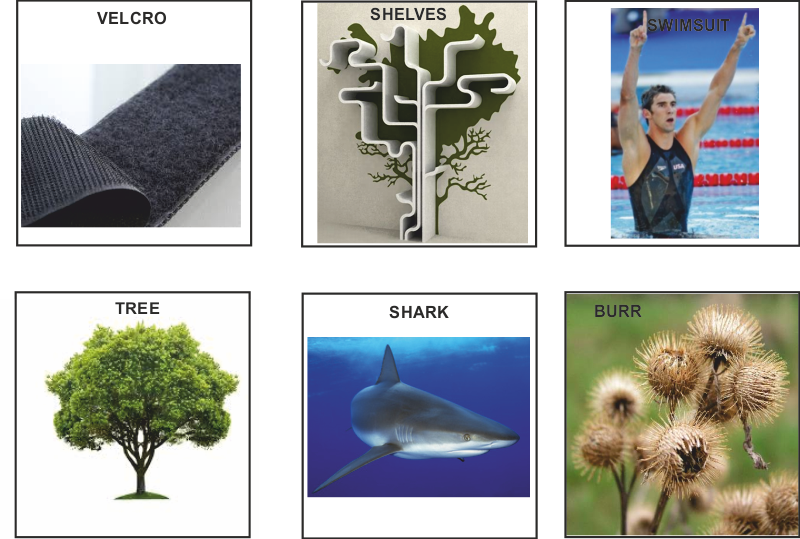 |
| |
|
|
| |
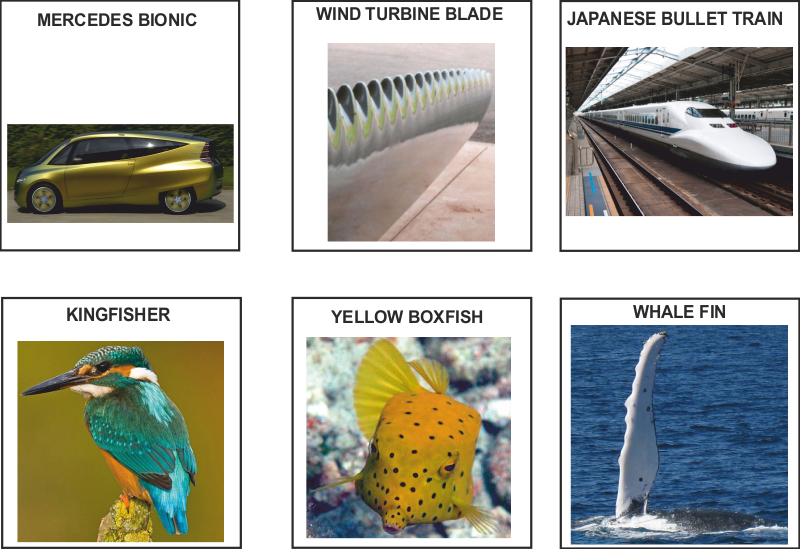 |
| |
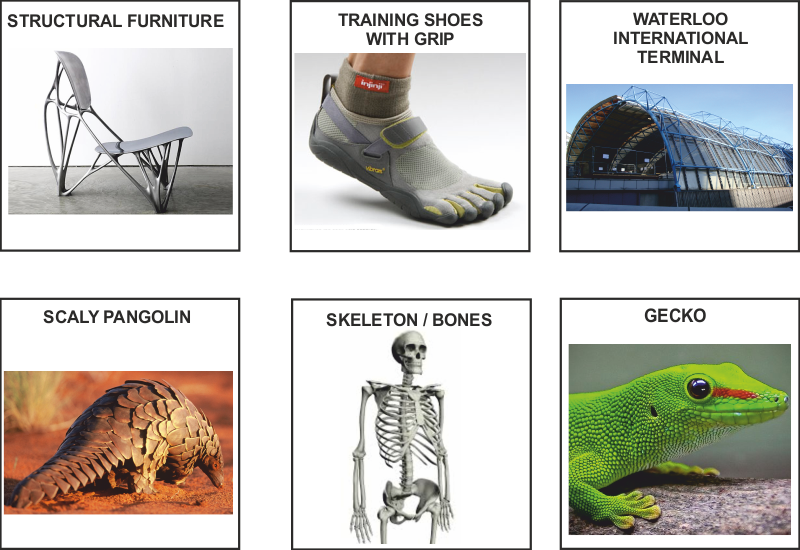 |
| |
|
|
| |
| ANSWERS |
| |
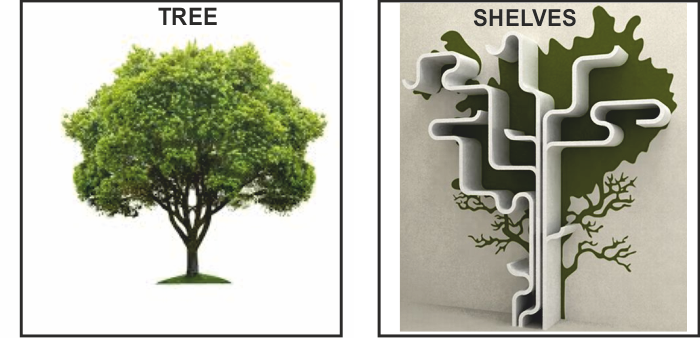 |
| |
| The tree inspired the design of this storage / shelving system. The shape of the branches and roots have been replicated, to produce this stylish design. |
| |
 |
| |
| In 1941 Swiss engineer Georges de Mestral was walking his dog through a field, when he realised that the dog’s fur and his trousers had numerous burrs attached to them. Burrs have natural hooks that attach to almost any type of fur and also textiles. A consequence of this event, is that he invented velcro. |
| |
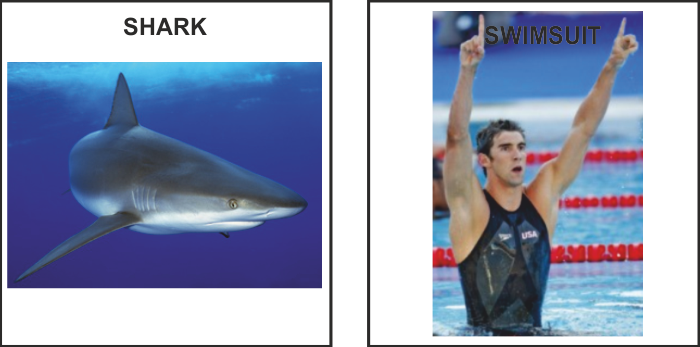 |
| |
When viewed through a powerful microscope, shark skin is constructed of overlapping scales. Nature through evolution, has ensured that water flows over the scales extremely efficiently, helping the shark to reach high speeds.
Australian designers studied this natural efficiency and applied the same principles to swimsuits and boat hulls. The swimsuits were so effective in international competition, that they are now banned. |
| |
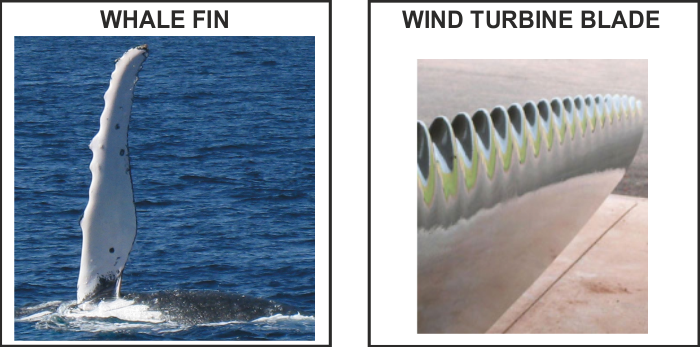 |
| |
|
|
| |
| Engineers studied the efficiency of whale fins in water and as a consequence have developed a new type of blade for wind turbines. The new design reduces noise, which is a common problem and has increased the generation of electricity by 20%.This design of blade, is also being applied to fans, pumps and compressors, to make them run quietly and also to reduce the amount of electricity they consume. |
| |
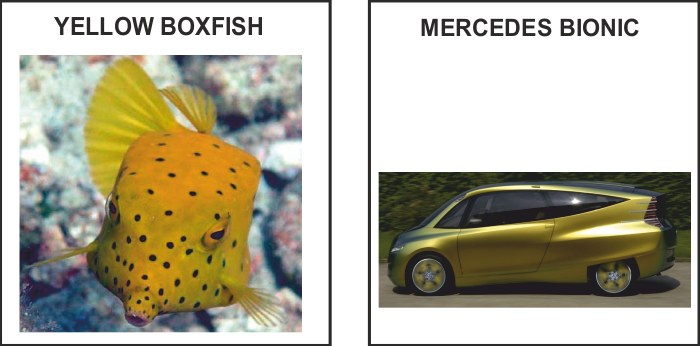 |
| |
| The yellow boxfish, found in tropical seas, inspired Mercedes-Benz to develop a car called the ‘Bionic’. The boxfish was selected as the basis of the design, because its unusual shape dramatically reduces drag, meaning that it is extremely efficient. Mercedes Benz were also interested in it’s exoskeleton, which is light yet extremely rigid. They applied what they found through research and experiment, to the frame of the new car. |
| |
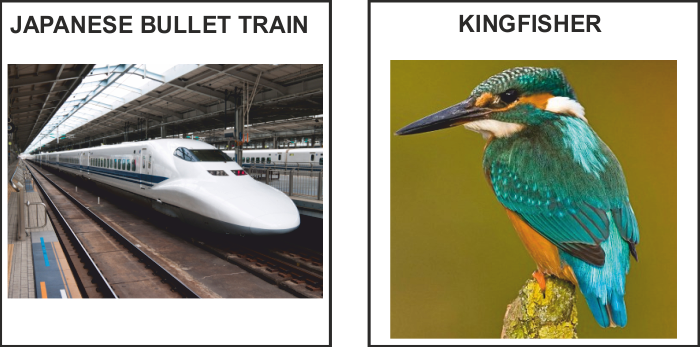 |
| |
| The shape of the ‘nose’ of the Japanese bullet train, was inspired by the kingfisher. The shape is very efficient and helps the train to move at very high speeds, due to reduced drag. The shape also reduced the noise of the train, as it exited tunnels at high speed. Other trains create a loud deep resonant sound when leaving a tunnel at high speed. |
| |
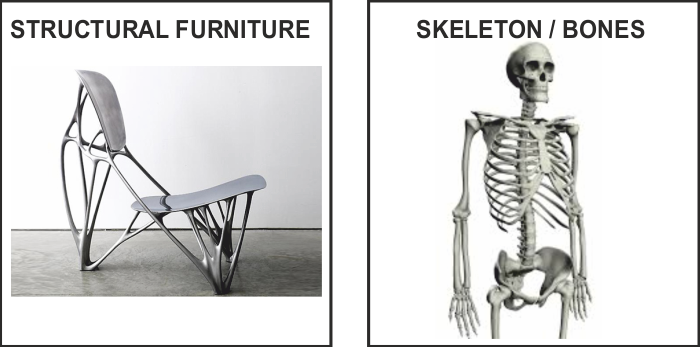 |
| |
| The well known and respected designer Joris Laarman, sometimes designs furniture inspired by the structure of bones. |
| |
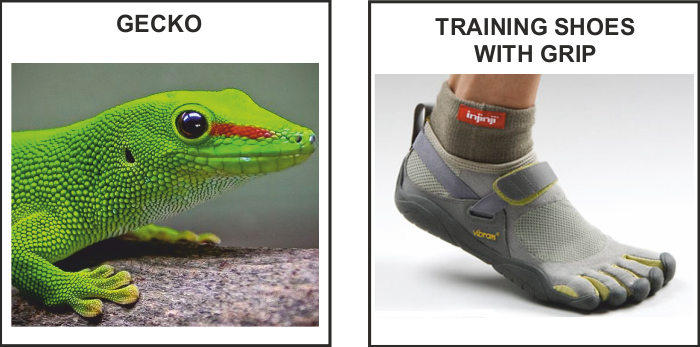 |
| |
| A gecko’s foot inspired these Vibram shoes. The manufacturer claims they have a natural feel and their grip aids walking, running and climbing. |
| |
 |
| |
The scaly pangolin inspired the design of the Waterloo International Terminal. The layout and movement of the glass panels, allow the surge in air pressure from trains entering the station, to efficiently and safely dissipate / escape.
The movement of the scales of the pangolin, allow air to circulate, regulating its temperature. |
| |
| CLICK HERE FOR PRODUCT DESIGN INDEX PAGE |
| |
|
| |
|











